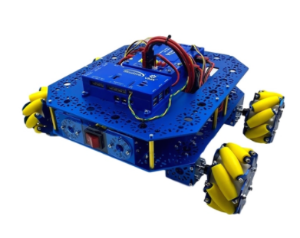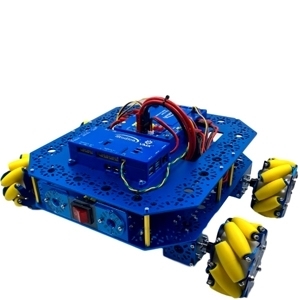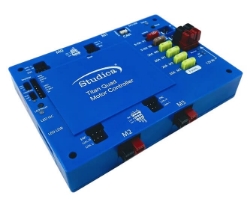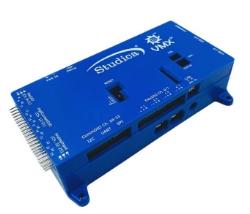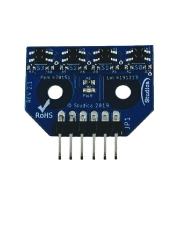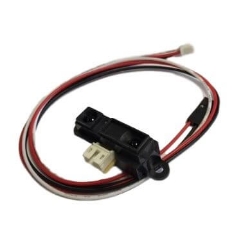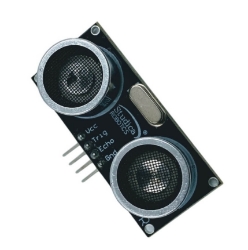Electronics
Electronics
Electronics are essential components in your robotics design, providing the control, sensing, actuation, power, and communication capabilities necessary for the functionality and performance of your robot.
Titan Quad Motor Controller
The Studica Robotics Titan Quad Motor Controller is a powerful, 4-channel CAN BUS -based motor controller with a built-in fuse-box (for DC motors up to 20A).
VMX Robotics Controller
The Studica Robotics VMX (part #70176) is a powerful robotics controller with technology for enabling a rich development environment. The VMX is a Linux-based computing platform with software tools and features enabling access to cutting-edge sensors.
NavX2-MXP Robotics Navigation Sensor
BRAND NEW NEXT-GENERATION SENSOR NOW AVAILABLE - Leveraging new sensors and state-of-the-art algorithms to deliver a leap forward in accuracy and performance.
“Generation 2” navX2-MXP is a drop-in replacement for the “Classic” navX-MXP, adding significant performance enhancements. See the full Product Overview below for more information about navX2-MXP's new and enhanced capabilities.
Download the CAD files
NavX2-Micro Robotics Navigation Sensor w/Case & Cable
The Studica Robotics navX2-Micro is a great sensor for orientation in competitive robots. The navX2-Micro is a second-generation 9-axis inertial/magnetic sensor and motion processor.
Servo Power Block
The Studica Robotics Servo Power Module is a 6V, 60W power injector that enables the use of high-power RC servos. The Servo Power Module passes through input signals unaltered while providing up to 60W of total output power across all eight channels. The input and output channels accept standard 3-wire, 0.1” pitch, servo/PWM cables.
Cobra Line Follower Sensor
The Studica Robotics Cobra Line Follower Array provides 4 X QRE1113 IR reflectance sensor mounted on a 9mm pitch. Each sensor is comprised of two parts - an IR emitting LED and an IR sensitive phototransistor. When you apply power to the VCC and GND pins the IR LED inside the sensor will illuminate.
Sharp IR Range Sensor (10cm to 80cm) w/wire
The Sharp IR Distance Sensor GP2Y0A21YK0F uses a beam of infrared light to reflect off an object to measure its distance.
Ultrasonic Distance Sensor
The Studica Robotics Ultrasonic Distance Sensor provides stable, accurate and high precision distance measurements.














